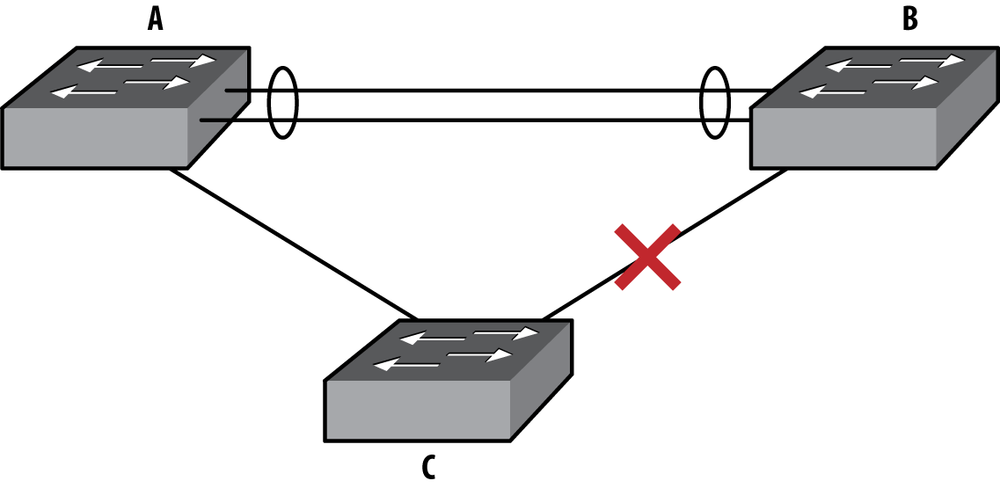Chapter 12. MLAG
Multichassis Link Aggregation (MLAG), is the Arista term for linking a port-channel to multiple switches instead of just one. The technology accomplishes the same basic goal as Cisco’s Virtual Port Channel (vPC); although, in my experience, MLAG is simpler to configure and less likely to fail in colorful, job-threatening ways.
MLAG Overview
The term LAG is an abbreviation for Link Aggregation, which is a non-Cisco way of describing the bonding of multiple physical links into a single logical link. In Cisco parlance, this technology is called Etherchannel. Different vendors use different terms for similar solutions, but the term LAG has become a cross-vendor acceptable way of describing the idea.
A LAG connects multiple physical links on the same switch. MLAG is designed to allow two or more links on multiple switches into a single logical link. Why would you want to do this? Let’s take a look.
With a traditional network design, interconnecting three switches results in a loop. Loops are bad, so Spanning Tree Protocol (STP) blocks the interface on the link farthest from the root. An example of this is shown in Figure 12-1.

Figure 12-1. Traditional STP-blocked network loop
In this scenario, there is a LAG connecting switch A to switch B. Switch C connects to both A and B switches, forming a loop. STP has blocked the interface on switch C that leads to switch B in order to ...
Get Arista Warrior now with the O’Reilly learning platform.
O’Reilly members experience books, live events, courses curated by job role, and more from O’Reilly and nearly 200 top publishers.

